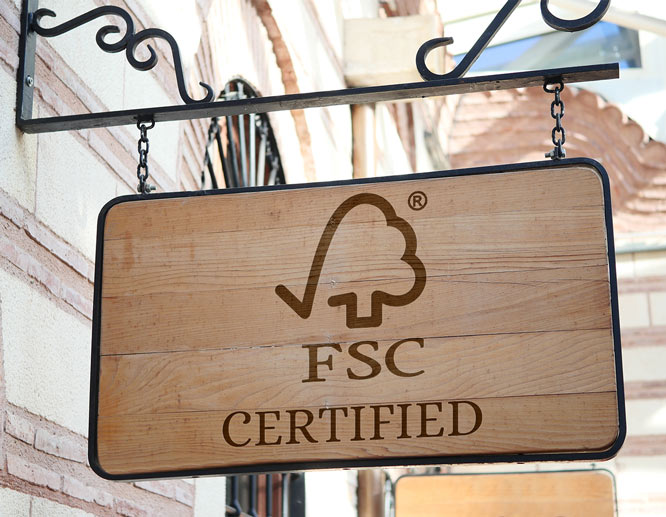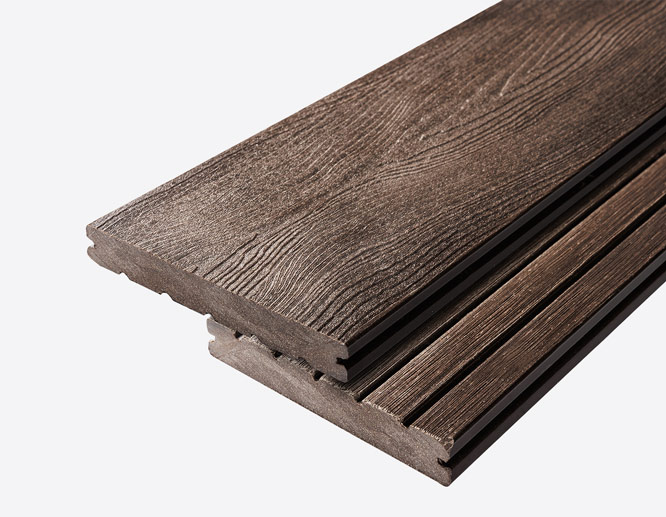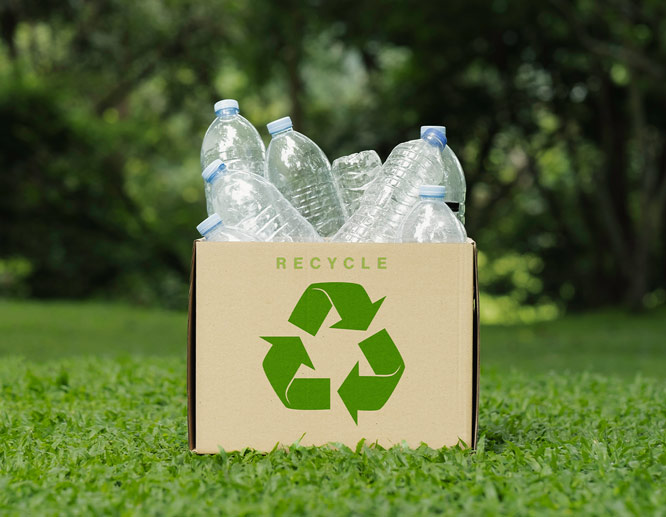While sustainability trends are always changing, the practice itself is going nowhere. Businesses and governments of all sizes worldwide have invested in sustainability, and with good reason. Aside from the moral and ethical reasons for engaging in it, customers across demographics want to do business with organizations that take steps to care for the environment.
When it comes to being a responsible environmental steward, there are many options business owners with storefront property can choose from. One option is choosing a sign made from eco-friendly materials.
Sustainable signage is the correct course of action for any business that invests in signs. Read on to see how certain signs can help reduce your carbon footprint while still helping your business attract customers.
Key Takeaways
- Sustainability signs offer several benefits for your business, your customers, and your community;
- There are many signs made out of eco-friendly material, but be wary of some marketing ploys;
- Your sustainable sign should be reusable. If you no longer need it, make sure you practice responsible disposal and recycling methods.
What is Sustainable Signage?
Sustainability is a broad term. When it comes to sustainable signs, we mean signs that last. In short, sustainable signage is signage that contributes less environmental waste and pollution.
We all have a role to play in sustainable practices, and we can all take action now to ensure a more hospitable and healthy environment both now and for the future.
Benefits of Sustainable Signs
When you invest in environmentally friendly signage, you will start to see how everything is connected. Once you do, you’ll see how many benefits, both big and small, come with such an investment.

Reduced Health Risks
Taking action to reduce your carbon footprint is good for your health. Multiple studies show that economies that practice sustainability have overall healthier populations. This ranges from better air quality to protecting workers and customers from harmful chemicals. When it comes to choosing the sign that’s perfect for the environment, it means it won’t emit harmful toxins or have flimsy material that will lead to more pollution.
Long-Term Durability
A sustainable sign has to be naturally durable; otherwise, it wouldn’t live up to its name. A durable sign means less maintenance. It also means that there is a lower chance of it needing to be replaced. These factors will save you money in the long term.
Less Environmental Impact
Unnecessary waste is a leading cause of environmental degradation. If your sign doesn’t need to be replaced, you lower the chance of contributing to such waste. Moreover, the most sustainable signs are ones that can be easily recycled, reused, or repurposed.
Improved Brand Image
Customers want to give their dollars to environmentally-conscious brands. They like to know that they are contributing to a business that cares about their base rather than a soulless corporation. One way to convey to customers that you care is to invest in a sustainable sign and to let your clientele know about this choice.
Competitive Advantage
An improved brand image, especially one that focuses on sustainability, also gives you a unique competitive edge. The more obvious you make it that you are practicing sustainability, the more likely you are to attract new customers who choose to give business to a company that prioritizes a healthy environment over one that doesn’t.
Regulatory Compliance
Many federal, state, and local laws now require you to use sustainable materials for your sign. Almost every year, new ordinances ensure businesses follow standard procedures. A sustainable sign will save you from all kinds of bureaucratic headaches.
Sustainable Signage Materials
Some sign materials are more sustainable than others, while some aren’t sustainable at all. This section will help you make an educated decision.
Recyclable Aluminum
Aluminum is a popular signage choice for a variety of reasons. It’s also one of the most recycled materials on the planet. Aluminum signs are durable, rust-proof, and lightweight. They also have a long shelf life, lasting anywhere from 10 to 15 years.
Reclaimed Wood
Whether you live in an urban or rural area, you can find discarded wood just about anywhere and use it for various purposes, including sign-making! Reclaimed wood is also a wonderful way to show off your creativity. Since no pieces of reclaimed wood are exactly the same, whatever sign you make will be truly one-of-a-kind.

Wood Prints
Wood prints are an eco-friendly alternative to paper and acrylic photo prints. Many wood prints are made of plywood, which is known for its weather-resistance and longevity. However, not all plywoods are sustainably sourced, so look for indications that your wood prints are. These indications include FSG certifications and low grades (E0 or E1).
Fabric-Based Signage
Banners made from cotton and hemp are biodegradable, durable, and can last for years if you place them indoors.

Bamboo
Bamboo is an awesome option when it comes to sustainable signage for several reasons. For one, it’s a recognizable design. The wood from bamboo is strong and dependable. Last but not least, it can look cool and unique!

Eco-Friendly Inks
Algae-based, vegetable-based, and water-based inks are three popular choices. They’re non-toxic and also renewable. Some of them, like algae-based inks, are also biodegradable.
FSC-Certified Wood
FSC stands for the Forest Stewardship Council. These types of signs can make your establishment look cool and modern. The FSC certification also lets your customers know that you have taken an extra step to ensure sustainable practices.

Eco-Friendly Composite Boards
These are made from sustainable signage materials such as wood and recycled plastics. Since they come from repurposed material, they curb the need to pull from more resources like wood. Additionally, since they’re often made of recycled plastic, they reduce the amount of waste that goes into landfills.

Recycled Plastics
You can show off your creative side and reduce waste with signs made from old plastic materials such as bottles, packages, piping, and even toys. You might come across “biodegradable” plastics in your research for sustainable signage, but such descriptions are an exaggeration. Since sustainability is becoming increasingly popular, some brands are taking advantage of it for all the wrong reasons. Simply having “sustainable” or “eco-friendly” in a title does not make it so.

Signage Options that Support Reuse
Fortunately, you don’t need to make sustainable signs from scratch. Here are five sustainable sign options you can choose that are practical and effective.
SEG Fabric
SEG fabric is a popular choice for trade shows and in retail stores. They’re known for their durability and professional, clean design. Although many SEG fabrics are made with polyester, you can easily find ones that are made from recycled materials and eco-friendly inks.
Magnetic Graphics
The reusable nature of magnetic graphics makes them a more sustainable choice than single-use graphics. You can find graphics printed with recycled material with algae, vegetable, or water-based inks. Magnets also help limit waste since they do not leave any residue.
Aluminum Signage
In addition to aluminum being one of the most recycled materials and its long-lasting nature, it is versatile. You can use aluminum signs for your business, displaying information and notices, wayfinding, or decorating. They also come in a wide variety of styles and colors, including brushed, reflective, and dibond.
Digital Signage
With a digital sign, there’s less of a chance for pollution and waste. If you’re trying to be mindful of energy consumption, consider investing in digital signage that’s solar-powered.

Modular Sign Systems
Eco-friendly modular sign systems consist of the materials we’ve previously covered. If you want to make eco-friendly signage with a modular sign system, you can do so with bamboo, reclaimed wood, or aluminum.

How to Select Sustainable Signs
To find a sustainable sign that meets your needs, ask yourself a few questions: Where am I placing the sign, outdoors or indoors? Does aluminum, bamboo, or wood mesh well with the aesthetic of my establishment? What message am I trying to convey? Does this sign reflect the values of my brand?
Once you’ve answered these questions, you can then choose which material fits best with your business.
How to Design An Eco-Friendly Sign
If you want to make your very own environmentally-friendly signage, follow these three basic steps:
- Use a minimalist design and keep it simple. The fewer items your design has, the less likely you’ll run the risk of contributing to littering and waste.
- Choose the proper sizing. Make sure you have the right dimensions for where you will place your sign. This will not only save you time and energy, it will also reduce waste.
- Use recyclable inks. As previously mentioned, there are three popular recyclable inks creatives use when making eco-friendly signage. These are algae-based, vegetable-based, and water-based inks.
Eco-Friendly Disposal and Recycling of Old Signage
Remember that one of the reasons plastic is not environmentally friendly is that it’s hard to recycle. That, and the damage the plastic-making process does to the environment. Some facilities recycle PVC in the U.S., but they are few and far between.
With that being said, there are various ways you can properly dispose of eco-friendly signs.
As for wood, you can easily compost it. Similarly, aluminum is widely accepted at recycling facilities and is reusable.
All this brings us to our last suggestion: consider repurposing your sign or donating it once you no longer need it for its original purpose!
Ready to start your sustainable signage journey? Visit Square Signs today!

